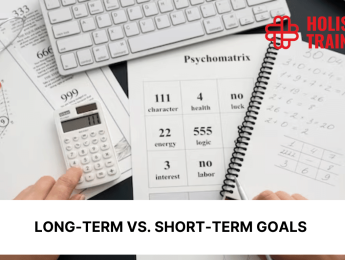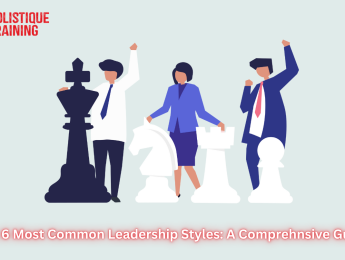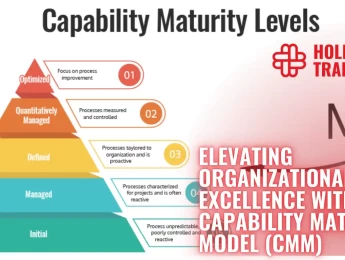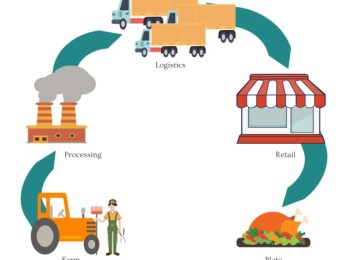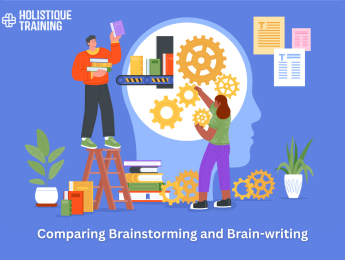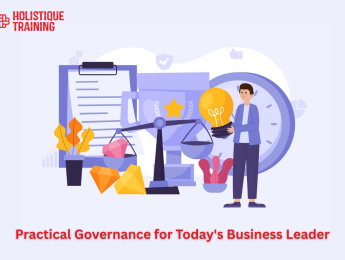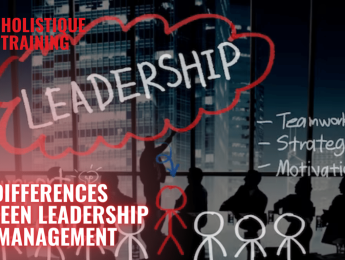- Table of Contents
- Introduction
- Long-Term vs. Short-Term Goals
- Long-Term Goals
- Short-Term Goals
- Why Balancing Both Is Crucial
- Sustaining Momentum
- Ensuring Long-Term Viability
- Adaptation to Change
- Stakeholder Confidence
- Elements Influencing the Equilibrium
- 1. Industry Dynamics
- 2. Organisational Life Stage
- 3. Economic Climate
- 4. Leadership Philosophy
- 5. Competitive Landscape
- Best Practices for Achieving Balance
- 1. Define Clear Objectives
- 2. Break Down Long-Term Goals
- 3. Prioritise Flexibility
- 4. Allocate Resources Wisely
- 5. Foster Communication
- 6. Data-Informed Decision-Making
- The Role of Technology in Balancing Goals
- Real-Time Data Analytics
- Artificial Intelligence (AI) and Machine Learning
- Automation
- Strategic Planning and Forecasting
- Communication and Collaboration Platforms
- Customer Relationship Management (CRM) Systems
- Data Security and Privacy
- Employee Training and Development
- The Psychology of Goal Alignment
- a. Intrinsic Motivation
- b. Employee Engagement
- c. Cognitive Dissonance
- d. Goal Setting Theory
- e. Psychological Safety
- f. Recognition and Rewards
- g. Continuous Learning and Development
- h. Communication and Transparency
- Conclusion
Introduction
In the ever-evolving landscape of business, where objectives serve as guiding stars, two types of goals emerge as the driving forces behind an organisation's journey: long-term goals and short-term goals. These goals, distinct in nature yet intricately connected, play pivotal roles in determining an organisation's success. Achieving equilibrium between them is akin to the art of walking a tightrope, requiring finesse, foresight, and adaptability. In this comprehensive exploration, we will delve into the depths of balancing long-term and short-term goals, examining their differences, understanding the importance of harmonising them, identifying influencing factors, and discovering best practices for achieving this delicate balance.
Long-Term vs. Short-Term Goals
Long-Term Goals
Long-term goals are an organisation's North Stars, the aspirational objectives that guide its course over extended periods, often spanning several years. These goals lay the foundation for growth, innovation, and sustained success. They encompass a wide spectrum of aspirations, from expanding into new markets to establishing a strong brand presence and achieving a significant market share. They represent the organisation's grand design, much like architectural blueprints for a skyscraper.
Short-Term Goals
In stark contrast, short-term goals are more immediate in nature, focusing on tactical steps required to make daily, weekly, or monthly progress. They are the bricks laid down daily to maintain operations, meet quarterly targets, and react swiftly to market shifts. Short-term goals represent the organisation's day-to-day activities and the efforts necessary to keep the engine running smoothly.
A surprising statistic from Collato reveals that just over half (51%) of companies attempt to create goals that align long-term and short-term goals. Even more astonishing is that only 6% of these companies revisit these goals regularly, as reported by the same source. Furthermore, a significant 80% of organisations struggle to keep track of their business goals, as reported by the same source. These numbers underscore the challenge organisations face in striking a balance between their long-term and short-term goals.
Aspect | Short-Term Goals | Long-Term Goals |
Time Frame | Immediate to Months | Years and Beyond |
Focus | Tactical, Immediate | Strategic, Future-Oriented |
Scope | Narrow and Specific | Broad and Aspirational |
Importance | Operational Impact | Transformational Impact |
Measurement | Short-Term Metrics | Long-Term Milestones |
Adaptability | Responds to Market | Guides Strategic Vision |
Employee Engagement | Quick Wins, Motivation | Long-Term Commitment |
Table 1: Key differences between short-term and long-term goals
Why Balancing Both Is Crucial
The intricate dance between long-term and short-term goals holds immense significance for several compelling reasons:
Sustaining Momentum
Short-term goals provide the essential stepping stones that maintain a constant stream of accomplishments. This ongoing momentum keeps employees engaged, motivated, and focused on the immediate tasks at hand. It's like fueling a car on a long journey; without consistent refuelling (short-term goals), the journey comes to a standstill. Short-term successes create a sense of achievement and motivate the workforce to tackle the next challenge.
Ensuring Long-Term Viability
While short-term goals keep the organisation moving forward, long-term goals safeguard its viability over time. They provide direction to the strategic vision, preventing the organisation from becoming lost in the whirlwind of daily activities. Long-term goals help organisations stay true to their larger purpose and mission. Think of them as the lighthouse guiding a ship through a stormy sea; they keep the organisation on course, ensuring it reaches its destination even in turbulent times.
Adaptation to Change
The business landscape is notorious for its volatility. The balance between long-term and short-term goals offers the flexibility to adapt to unforeseen changes while still moving towards the ultimate objectives. This adaptability is crucial for survival and growth, especially in a rapidly changing world. It's akin to having a versatile toolkit; short-term goals are the wrenches and screwdrivers you use for quick fixes, while long-term goals serve as the blueprints for building a resilient, adaptable organisation that can weather any storm.
Stakeholder Confidence
Investors, employees, and customers value stability and progress. An organisation that can showcase both immediate wins and a clear long-term vision enhances stakeholder confidence in its direction. This, in turn, can attract investments, retain top talent, and foster customer loyalty. It's akin to instilling trust in your organisation's journey; stakeholders are more likely to commit and support when they see a careful balance between short-term successes and long-term sustainability.
Importance | Balancing Short-Term and Long-Term Goals |
Sustaining Momentum | Ongoing achievements maintain motivation |
Ensuring Long-Term Viability | Safeguard future amid daily activities |
Adapting to Change | Flexibility to navigate unpredictable shifts |
Stakeholder Confidence | Builds trust, attracts investments, fosters loyalty |
Table 2: The importance of balancing short-term and long-term goals
Elements Influencing the Equilibrium
Achieving equilibrium between short-term needs and long-term targets is not a one-size-fits-all formula; it's a dynamic interplay influenced by various factors:
1. Industry Dynamics
The nature of your industry significantly impacts how you balance these goals. Tech startups, for instance, might prioritise rapid growth to gain a competitive edge, while established industries may lean more towards maintaining stability to weather market fluctuations. In highly competitive sectors, organisations must strike a meticulous balance between agility and long-term strategy, as disruptive technologies and market shifts can swiftly change the game's rules.
2. Organisational Life Stage
Another critical factor is your organisation's life stage. A fledgling startup will have different priorities than a mature corporation. Early-stage companies may emphasise short-term survival and market validation, while established entities focus on diversification and long-term sustainability. As organisations evolve, their goals naturally shift, and balancing short-term wins with long-term vision becomes an evolving challenge that requires continuous adaptation.
3. Economic Climate
Economic booms and recessions shape how resources are allocated. Organisations might invest more in long-term research and development during prosperous times, whereas in economic downturns, survival and cost-cutting may take precedence. Economic factors profoundly influence the allocation of resources and the strategic emphasis of organisations. During economic downturns, for example, companies may need to prioritise short-term profitability to weather the storm and emerge stronger in the long run.
4. Leadership Philosophy
An organisation's leadership philosophy greatly influences its approach to goal setting. Visionary leaders may emphasise long-term innovation and market disruption, while pragmatic leaders could concentrate on short-term profitability and efficiency. Leadership style sets the tone for the entire organisation, impacting the balance between long-term and short-term goals. The visionary leader inspires innovation, while the pragmatic leader ensures stability; finding the right blend often determines an organisation's success.
5. Competitive Landscape
The actions and strategies of competitors can significantly impact an organisation's approach to balancing goals. If rivals make rapid strides in the short term, an organisation might adjust its approach to stay competitive. In a cutthroat market, organisations may be compelled to focus more on short-term tactics, including market responsiveness and immediate profitability, to maintain or gain an edge. Conversely, they may have the luxury of allocating more resources to long-term strategic endeavours in a less competitive environment.
Navigating the dynamic interplay of these elements is a continuous process that requires careful evaluation, strategic foresight, and the ability to adapt swiftly to changing circumstances. The equilibrium between short-term needs and long-term targets is a delicate dance that organisations must perform to thrive in today's ever-evolving business landscape.
Best Practices for Achieving Balance
Balancing long-term and short-term goals is a strategic art that requires thoughtful practice. Here are some best practices to help your organisation strike the right balance:
1. Define Clear Objectives
Start by aligning your organisation with well-defined, overarching long-term objectives. These objectives provide a clear destination for the entire team, ensuring everyone is moving in the same direction. This clarity is a guiding beacon, helping employees understand their roles in achieving the organisation's broader mission. When objectives are crystal clear, individuals at all levels can work cohesively towards a shared vision.
2. Break Down Long-Term Goals
Transform daunting long-term goals into manageable short-term milestones. This not only facilitates progress tracking but also maintains motivation among employees. Breaking down long-term goals into smaller, achievable steps creates a sense of accomplishment. These short-term victories are markers of progress, fostering a sense of achievement and momentum that propels the organisation forward.
3. Prioritise Flexibility
In today's rapidly changing business environment, balance doesn't mean rigidity. It's about being agile and adapting as circumstances evolve. Encourage a culture of adaptability within your organisation to respond effectively to changing market conditions. Flexibility allows organisations to pivot when necessary, ensuring they remain on course to achieve their long-term objectives despite unexpected challenges.
4. Allocate Resources Wisely
Resource allocation should reflect the balance you're striving to achieve. Allocate sufficient resources for short-term wins without neglecting long-term investments. Consider allocating resources based on the current economic climate and competitive landscape. Resource allocation is a delicate balancing act; organisations must allocate enough resources to meet short-term targets while reserving ample capital, talent, and time for long-term strategic initiatives.
5. Foster Communication
Create a culture of open communication within your organisation. Ensure that employees understand the company's vision and how their daily tasks contribute to both immediate and long-term goals. Encourage feedback and transparency to keep everyone aligned. Effective communication is the linchpin of goal alignment. When employees are well-informed and understand their roles in achieving both short-term and long-term goals, they are more likely to be engaged and motivated.
6. Data-Informed Decision-Making
Utilise data-driven insights to inform your decisions. Data can help you adapt your strategies to both short-term market trends and long-term shifts in the industry. Invest in data analytics tools and expertise to stay ahead of the curve. Data gives organisations a competitive advantage by offering real-time information that guides decision-making. Organisations can make informed choices that balance immediate needs with future goals by analysing both short-term and long-term data trends.
The Role of Technology in Balancing Goals
In today's digital age, technology is pivotal in helping organisations balance their long-term and short-term goals. Technology integration streamlines processes and provides the tools and insights necessary to strike the right balance. Here's a detailed look at the role of technology in achieving this equilibrium:
Real-Time Data Analytics
Modern technology enables organisations to gather and analyse data in real time. This capability allows businesses to track progress continuously on both short-term and long-term goals. Real-time data analytics provide insights into consumer behaviour, market trends, and operational efficiency. For example, retail businesses can use point-of-sale data to adjust inventory levels in real time to meet immediate customer demand while optimising long-term supply chain strategies.
Artificial Intelligence (AI) and Machine Learning
AI and machine learning algorithms can process vast amounts of data to identify patterns and make predictions. These technologies help organisations make informed decisions that align with both immediate needs and long-term objectives. For instance, AI-powered customer service chatbots can handle short-term inquiries efficiently, freeing up human agents to focus on long-term customer relationship building.
Automation
Automation technologies streamline repetitive tasks, allowing employees to dedicate more time to strategic activities. Organisations can achieve short-term efficiency gains by automating routine processes while freeing up human resources for long-term innovation and value creation. In manufacturing, automation can optimise production processes for immediate cost savings while enabling long-term sustainability through reduced waste and energy consumption.
Strategic Planning and Forecasting
Technology tools, such as advanced modelling and simulation software, assist organisations in scenario planning and forecasting. These tools help businesses understand the potential impacts of their decisions on both short-term and long-term outcomes. For example, financial institutions can use simulation software to assess the immediate and long-term consequences of different investment strategies, striking a balance between short-term gains and long-term portfolio growth.
Communication and Collaboration Platforms
Digital communication and collaboration platforms such as Slack facilitate teamwork and knowledge sharing among employees, regardless of their physical locations. These platforms enable seamless coordination between short-term project teams and long-term strategic planning efforts. Organisations can leverage video conferencing, messaging apps, and project management software to ensure that both immediate tasks and long-term initiatives progress smoothly.
Customer Relationship Management (CRM) Systems
CRM systems like Salesforce provide a comprehensive view of customer interactions and preferences. This data lets organisations personalise short-term marketing campaigns while nurturing long-term customer relationships. By tailoring short-term promotions and communications to individual customer needs, organisations can maximise immediate sales while building loyalty for the long term.
Data Security and Privacy
As technology plays a central role in data-driven decision-making, organisations must also invest in robust data security and privacy measures. Safeguarding both short-term transactional data and long-term strategic plans is essential to protect the organisation's reputation and customer trust. A data breach can have immediate financial repercussions while also undermining long-term growth prospects.
Employee Training and Development
Technology facilitates ongoing employee training and development, ensuring that the workforce possesses the skills to execute short-term and long-term strategies. Online learning platforms and virtual training modules allow employees to acquire new knowledge and competencies efficiently. This empowers them to contribute effectively to immediate goals while preparing for long-term challenges.
Incorporating technology strategically into an organisation's operations and decision-making processes is vital for balancing short-term needs and long-term objectives. By harnessing the power of data analytics, automation, and collaboration tools, businesses can navigate the complexities of the modern business landscape with greater agility and precision, ultimately driving sustainable growth and enduring success.
The Psychology of Goal Alignment
Understanding the psychology of goal alignment is essential for achieving harmony between long-term and short-term goals within an organisation. This knowledge delves into the motivations, behaviours, and attitudes of individuals within the workforce and how they connect to the company's broader mission. Here, we explore the psychological aspects of goal alignment in detail:
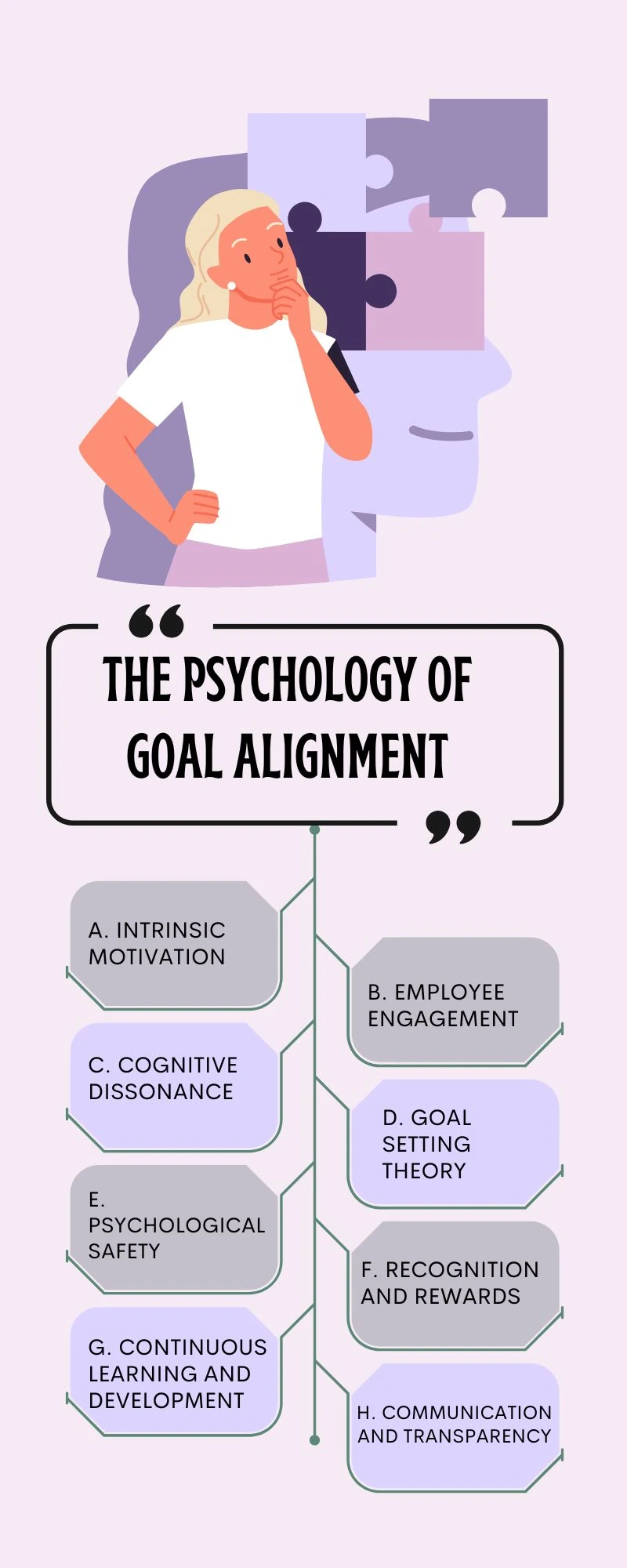
a. Intrinsic Motivation
Intrinsic motivation is the engine that drives employees to excel when they see a clear connection between their daily tasks and the larger mission of the organisation. When individuals understand how their efforts contribute to both short-term achievements and long-term objectives, they are more likely to be intrinsically motivated. Managers can tap into this by regularly communicating the significance of each team member's role in the grander scheme, fostering a sense of purpose that transcends immediate gains.
b. Employee Engagement
Goal alignment is intrinsically tied to employee engagement. Engaged employees are those who feel emotionally connected to their work and are enthusiastic about contributing to the organisation's success. Employees become more engaged when they see how their tasks fit into both short-term and long-term goals. Leaders should encourage open communication and feedback, allowing employees to voice their ideas and concerns regarding goal alignment.
c. Cognitive Dissonance
Cognitive dissonance occurs when there is a disconnect between an individual's beliefs, attitudes, and behaviours. Goal alignment arises when employees are asked to pursue short-term goals that seem incongruent with the organisation's long-term values and mission. Organisations should ensure that their short-term objectives align with their overarching values and vision to avoid cognitive dissonance. This alignment creates a sense of coherence that reduces stress and increases employee commitment.
d. Goal Setting Theory
Goal setting theory posits that individuals perform better with clear, challenging goals. These goals need to be specific and achievable, whether they are related to short-term tasks or long-term aspirations. Managers should work with employees to set SMART (Specific, Measurable, Achievable, Relevant, Time-bound) goals that align with both immediate targets and the organisation's strategic vision.
e. Psychological Safety
Psychological safety is a crucial factor in goal alignment. Employees must feel safe to voice their opinions, ideas, and concerns without fear of retribution. When there is psychological safety within a team or organisation, employees are more likely to discuss how their work aligns with both short-term and long-term goals. Leaders can promote psychological safety through active listening, empathy, and constructive feedback.
f. Recognition and Rewards
Acknowledging and rewarding employees for their contributions to both short-term and long-term goals can reinforce goal alignment. Recognising individuals and teams for achieving milestones, whether immediate wins or progress toward long-term objectives, encourages commitment. Recognition programmes should be designed to celebrate short-term successes and sustained efforts that contribute to the organisation's enduring legacy.
g. Continuous Learning and Development
Promoting a culture of continuous learning and development can enhance goal alignment by helping employees acquire the skills and knowledge necessary to support both short-term and long-term objectives. Organisations should invest in training and development programmes that align with their strategic goals, fostering a workforce capable of adapting to changing circumstances and contributing to the organisation's success over time.
h. Communication and Transparency
Effective communication and transparency are cornerstones of goal alignment. Employees need to understand the organisation's overarching mission, how their roles fit into it, and how both short-term and long-term goals support that mission. Leaders should communicate openly and regularly, ensuring the entire workforce is well-informed about the strategic direction and how their efforts contribute to it.
By delving into the psychology of goal alignment, organisations can create an environment where employees are motivated and deeply committed to the organisation's journey. Understanding the intrinsic motivations, emotional connections, and cognitive processes that underlie goal alignment empowers leaders to foster a workforce that is not only aligned with immediate objectives but also fully invested in the organisation's long-term success.
Conclusion
Balancing long-term and short-term goals is both an art and a science. It requires strategic finesse, a forward-looking mindset, and a willingness to adapt to the ever-changing business landscape. By understanding the differences between these goals, appreciating their individual significance, and navigating the influencing factors with thoughtful practices, organisations can stride confidently toward success, achieving not just momentary triumphs but also a lasting legacy. In the dynamic business world, mastering this balance is the key to sustainable growth and enduring prosperity.


